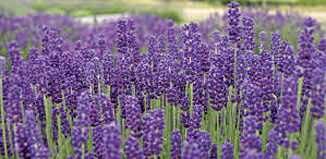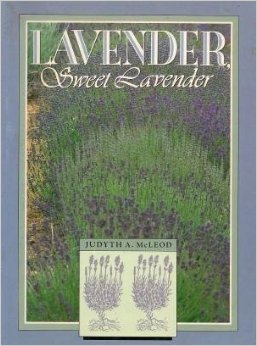 Whenever I think of lavender, smell it or see it, it is the plaintiff song from the Victorian flower seller at Covent Garden that springs to my mind. Now is the time to think, smell and plant lavender. The gardeners can just enjoy its delights in their garden, the aromatherapists can use the beneficial oils, the clever craft people can dry it and use it in a myriad of ways to imbue the home throughout the year.
Whenever I think of lavender, smell it or see it, it is the plaintiff song from the Victorian flower seller at Covent Garden that springs to my mind. Now is the time to think, smell and plant lavender. The gardeners can just enjoy its delights in their garden, the aromatherapists can use the beneficial oils, the clever craft people can dry it and use it in a myriad of ways to imbue the home throughout the year.
The lavender for fragrance and oil is the English lavender, Lavender Angustifolia, also described as Spica or Lavandin. Charming though it may be, the upright French Lavender with its rabbit ears is not for me. I love the look of those graceful drifts of blue, blowing gently and falling with the weight of the blooms gracing the garden.

 Where I want a tall display of them I would plant either ‘Seal’ or ‘Super’. They both have a wonderful colour — a rich blue mauve, and fragrance. They are productive plants worthy of the space they will occupy when fully grown. They please the eye and the senses and are a must for any romantic garden.
Where I want a tall display of them I would plant either ‘Seal’ or ‘Super’. They both have a wonderful colour — a rich blue mauve, and fragrance. They are productive plants worthy of the space they will occupy when fully grown. They please the eye and the senses and are a must for any romantic garden.
If smaller and neater is what you require try Hidcote — also known as Hidcote Purple or Blue. Smaller with a stronger colour they are well suited at the front of a border as they reache only 60-75 cms high. It has a lovely shape, masses of flowers of a strong rich purple and as an added bonus it retains its colour on drying.
A quick note on keeping them going year upon year. Prune them back hard to a mounded shape but be sure you keep some of the grey leaves. That way they will not get too leggy as they age.
For a definitive book on lavenders read Judyth McLeod’s ‘Lavender Sweet Lavender’ or go and talk to Susi at Lavender Creek Farm Te Horo, where she has an outstanding display of every lavender in New Zealand.

